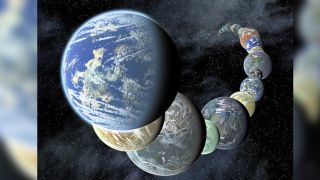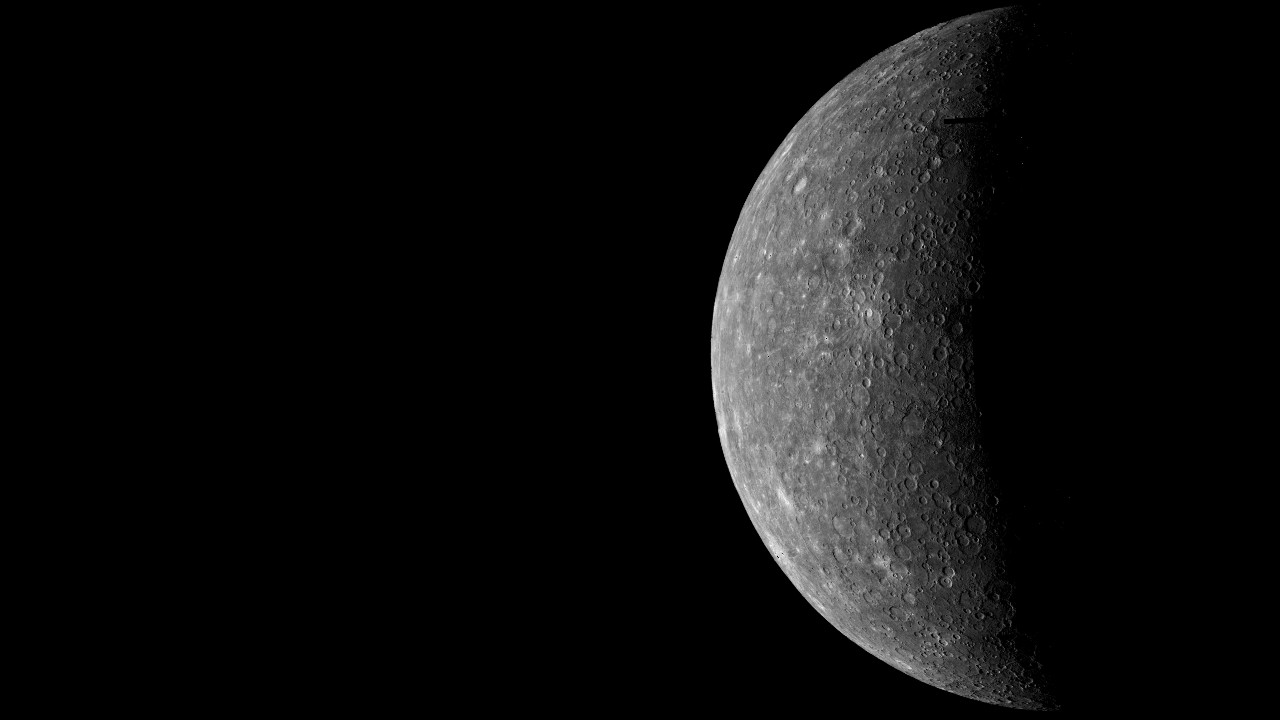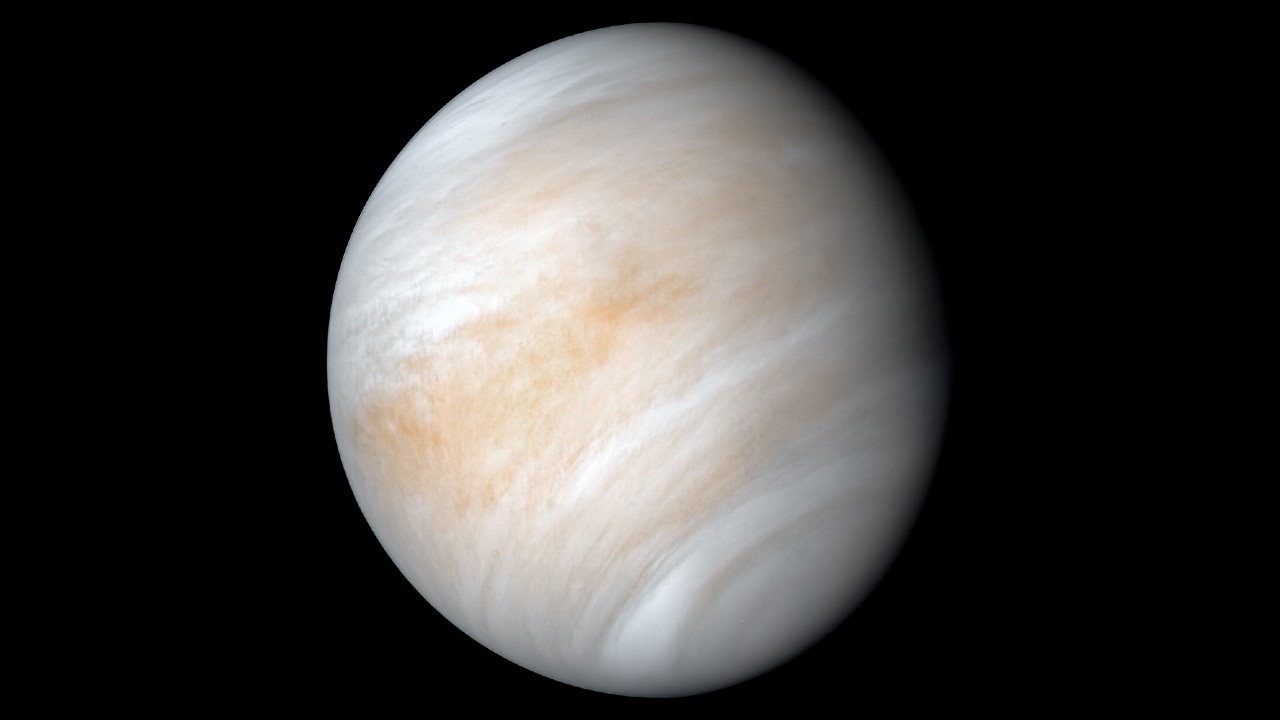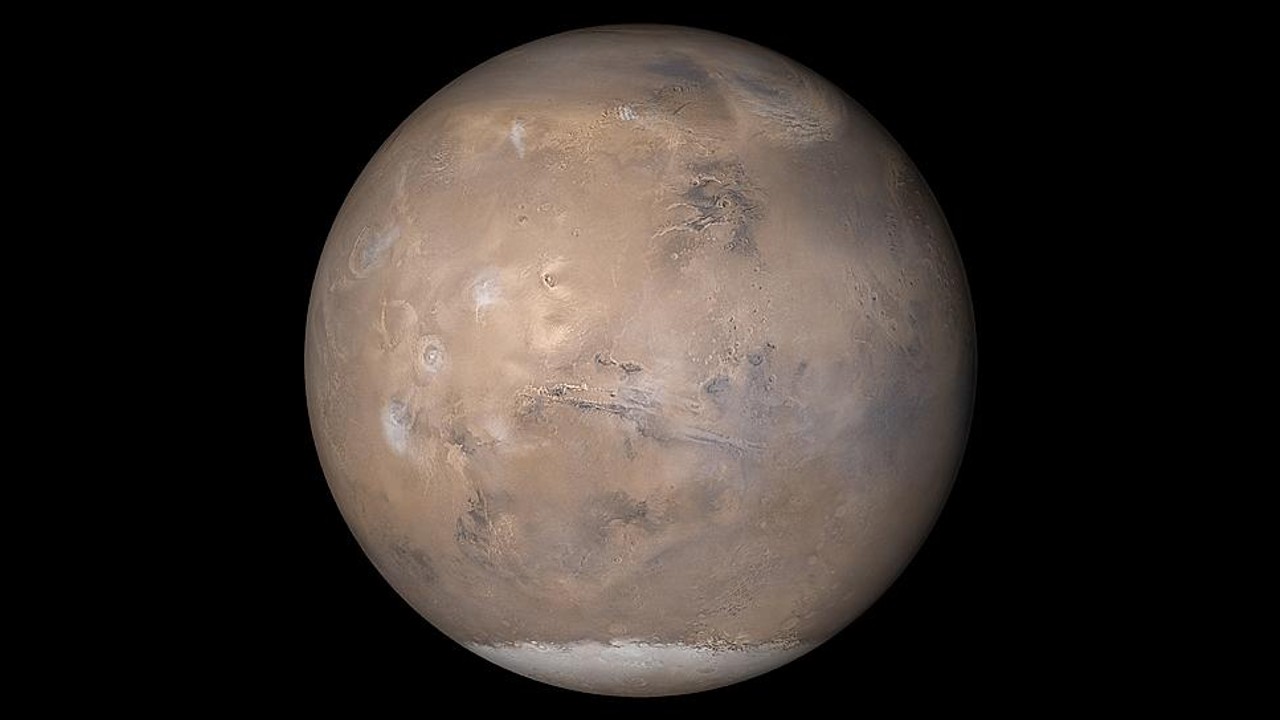What Relationship Exists Between A Planet's Size (Diameter) And Its Density
Terrestrial planets: Definition & facts near the inner planets and across

Terrestrial planets are Earth-like planets fabricated upward of rocks or metals with a hard surface. Terrestrial planets also accept a molten heavy-metallic core, few moons and topological features such every bit valleys, volcanoes and craters.
In our solar organisation, there are iv terrestrial planets, which also happen to be the four closest to the dominicus: Mercury, Venus, World and Mars.
During the formation of the solar system, in that location were likely more terrestrial planetoids, but they either merged with each other or were destroyed.
The definition of "planet" from the International Astronomical Union is controversial. The IAU defines a planet as a celestial body that is in orbit around the sun, has a nearly circular shape, and has generally cleared its orbital neighborhood of droppings. Scientists are divided in particular on the 3rd betoken, with some maxim that it's hard to define how much clearing a planet does, while others maxim a world like Pluto would clear less than a earth like Earth. This means that some astronomers argue that the dwarf planet Pluto should be classified as a planet, along with various other dwarf planets scattered throughout the solar system.
Mercury

Mercury is the smallest terrestrial planet in the solar system, about a third the size of Earth. It has a sparse temper, which causes it to swing between burning and freezing temperatures. Mercury is also a dense planet, composed mostly of iron and nickel with an iron core. Its magnetic field is only about 1 per centum that of Earth's, and the planet has no known moons. The surface of Mercury has many deep craters and is covered by a sparse layer of tiny particle silicates.
In 2012, scientists establish extensive testify of organics — the building blocks of life — as well as water ice in craters shaded from the sun. Mercury's thin atmosphere and close proximity to the sun mean it's incommunicable for the planet to host life equally we know information technology.
Venus

Venus, which is near the same size as World, has a thick, toxic carbon-monoxide-dominated temper that traps heat, making it the hottest planet in the solar system. Venus has no known moons. Much of the planet's surface is marked with volcanoes and deep canyons.
The biggest canyon on Venus stretches beyond the surface for 4,000 miles (almost half dozen,500 kilometers). And information technology's possible that at to the lowest degree some of the planet's volcanoes are nonetheless active. Few spacecraft accept always penetrated Venus' thick atmosphere and survived. And it's non just spacecraft that accept trouble getting through the atmosphere — there are fewer crater impacts on Venus than other planets because only the largest meteors can make information technology. The planet is hostile to life as nosotros know information technology.
World

Of the four terrestrial planets, Earth is the largest, and the only one with extensive regions of liquid water. H2o is necessary for life every bit nosotros know it, and life is abundant on Earth — from the deepest oceans to the highest mountains. Like the other terrestrial planets, World has a rocky surface with mountains and canyons, and a heavy-metal cadre. World's atmosphere contains water vapor, which helps to moderate daily temperatures.
The planet has regular seasons for much of its surface; regions closer to the equator tend to stay warm, while spots closer to the poles are libation and in the winter, icy. The Globe'southward climate, all the same, is warming upwards due to climate change associated with human-generated greenhouse gases, which human action as a trap for escaping oestrus. Earth has a northern magnetic pole that is wandering considerably, by dozens of miles a year; some scientists advise it might be an early on sign of the north and south magnetic poles flipping. The terminal major flip was 780,000 years agone. Globe has one large moon that astronauts visited in the 1960s and 1970s.
Mars

Mars has the largest mountain in the solar system, rising 78,000 feet (nearly 24 km) above the surface. Much of the surface is very old and filled with craters, but in that location are geologically newer areas of the planet besides. At the Martian poles are polar ice caps that compress in size during the Martian spring and summer. Mars is less dense than World and has a smaller magnetic field, which is indicative of a solid core, rather than a liquid one.
While scientists take constitute no evidence of life yet, Mars is known to have water ice and organics — some of the ingredients for living things. Evidence of methane has also been constitute in some parts of the surface. Methane is produced from both living and non-living processes. Mars has two small moons, Phobos and Deimos. The Red Planet is likewise a popular destination for spacecraft, given that the planet may have been habitable in the aboriginal past.
Beyond the solar organization
During its lifetime, NASA'south Kepler space observatory discovered more than 2,300 confirmed conflicting planets — and thousands more possibilities — as of January 2019. Kepler ran out of fuel in 2018, but many of its possible planet discoveries even so need to be confirmed with follow-up observations from other telescopes. Using the data from the telescope, scientists calculated that at that place may be billions of Earth-like planets in the Galaxy galaxy.
In 2017 another telescope – The Transiting Planets and Planetesimals Minor Telescope (TRAPPIST) – discovered a system of Globe-like planets orbiting a star more than 39 low-cal-years away. Within the system are seven planets, thought to be terrestrial – 4 of which are super-Earth sized. This exoplanet system is known as the TRAPPIST-1.
A 2021 written report published in the Planetary Scientific discipline Journal suggests that all the planets in this system share a similar density. This could mean they share the same ratio of materials – such as atomic number 26, silicon and oxygen – commonly institute on rocky planets.
There are 3 planets in the TRAPPIST-i system that sit in the habitable zone of its primal star – TRAPPIST-i e, f and g. The habitable zone is the distance from the star whereby liquid water could exist on the planet's surface. Planets in this region of a solar system are potentially capable of hosting life.
A successor mission to Kepler, called TESS (Transiting Exoplanet Survey Satellite), began operations in 2018. The spacecraft is designed to look for Earth-size planets that are just a few light-years away from our planet, allowing for quick observations by other telescopes on Earth. As of early on 2019, TESS has already discovered a scattering of planets; its first confirmed notice was in September 2018.
Non-terrestrial planets
Not all planets are terrestrial. In our solar system, Jupiter, Saturn, Uranus and Neptune are gas giants, likewise known equally Jovian planets. It'due south unclear what the dividing line is between a rocky planet and a terrestrial planet; some super-Earths may have a liquid surface, for example. In our solar organisation, gas giants are much bigger than terrestrial planets, and they have thick atmospheres total of hydrogen and helium. On Jupiter and Saturn, hydrogen and helium brand up most of the planet, while on Uranus and Neptune, the elements brand up just the outer envelope. These planets are also inhospitable to life equally we know it, although this region of the solar system has icy moons that could take habitable oceans.
Boosted resources
For an in-depth look into our solar arrangement, cheque out NASA'due south interactive Solar System Exploration webpage. The Planets: The Definitive Visual Guide to Our Solar System by DK, is too an fantabulous illustrative guide to all things planets.
Bibliography
Courtney Dressing et al, "The mass of Kepler-93b and the composition of terrestrial planets," The Astrophysical Journal, Volume 800, Feb 2015.
Simon Grimm et al, "The nature of the TRAPPIST-i exoplanets", Astronomy & Astrophysics, Volume 813, May 2019, https://doi.org/ten.1051/0004-6361/201732233.
George Ricker et al, "Transiting Exoplanet Survey Satellite (TESS)," American Astronomical Society, Volume 42, January 2010.
NASA, "Mercury: Solar Arrangement Exploration," Jan 2022.
NASA, "Venus: Solar Organisation Exploration," January 2022.
NASA, "Mars: Solar System Exploration," January 2022.
NASA, "Globe: Solar Organization Exploration," January 2022.
Join our Space Forums to go on talking infinite on the latest missions, nighttime heaven and more than! And if you have a news tip, correction or comment, let usa know at: customs@space.com.
What Relationship Exists Between A Planet's Size (Diameter) And Its Density,
Source: https://www.space.com/17028-terrestrial-planets.html
Posted by: garciaskeemake.blogspot.com


0 Response to "What Relationship Exists Between A Planet's Size (Diameter) And Its Density"
Post a Comment